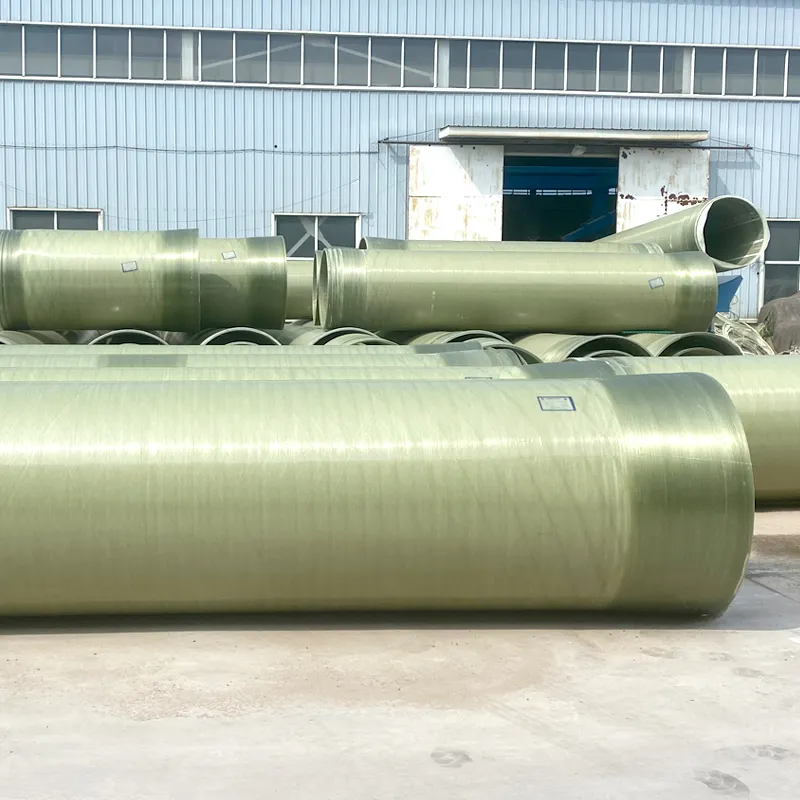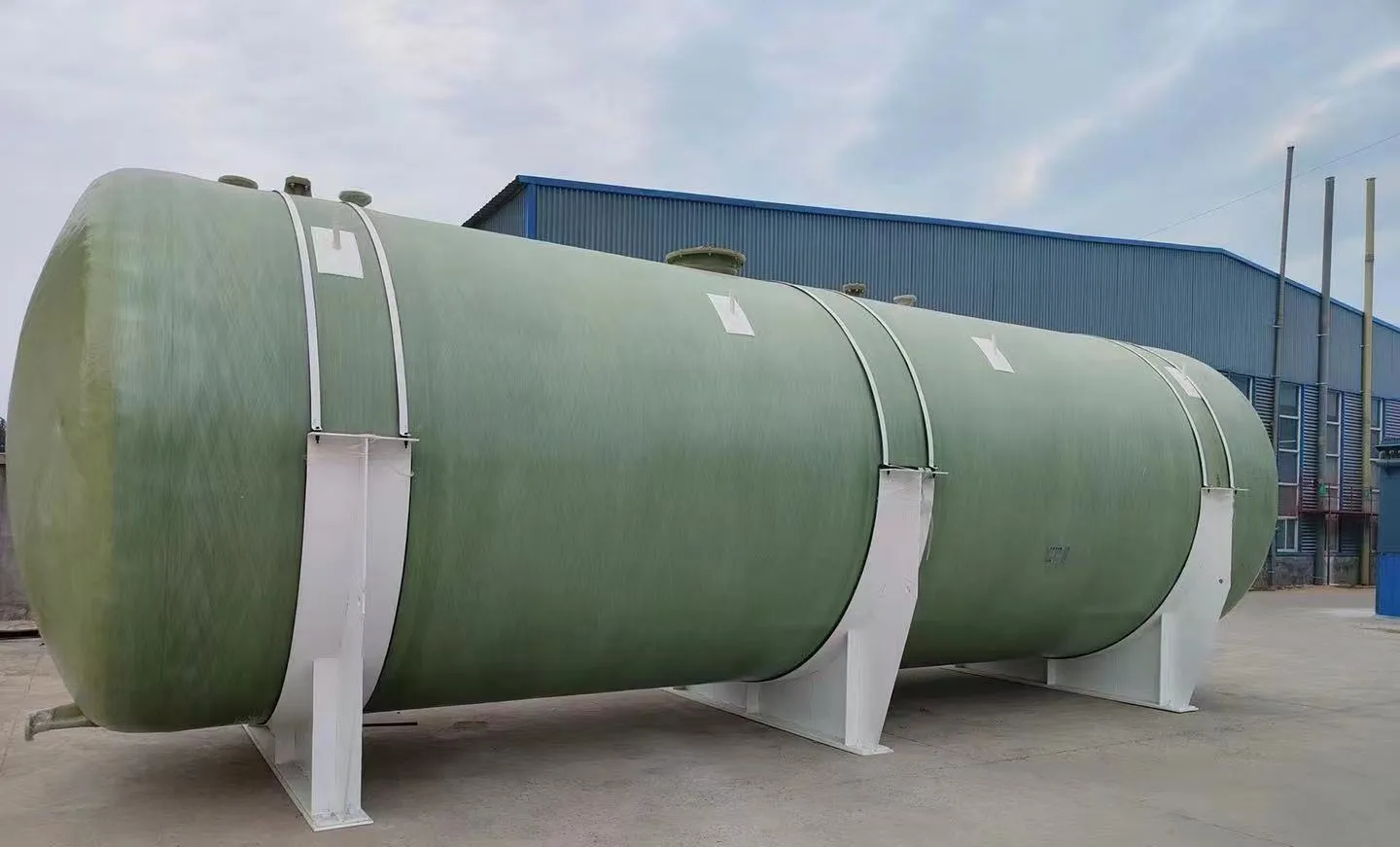Double Wall FRP Tank - Safe Leak-Proof Fuel Storage Buy Now
- Essential Features of Double Containment FRP Technology
- Performance Metrics that Transform Industry Standards
- Engineering Excellence: Material and Structural Advantages
- Comparative Analysis: Top Double-Walled Tank Manufacturers
- Customization Framework for Specific Operational Needs
- Verifiable Applications Across Critical Industries
- Procurement Guide for Double Wall FRP Tanks

(double wall frp tank)
Double Wall FRP Tank: Essential Features of Double Containment Technology
Fiberglass Reinforced Plastic (FRP) double wall fuel tanks represent engineering perfection in secondary containment systems. The concentric design creates an interstitial space between inner and outer walls that functions as leak detection zone - capable of containing 110% of the primary vessel's capacity. This patented configuration employs vacuum infusion molding techniques with fiberglass layers alternating between chopped strand mat and woven roving, achieving consistent wall thickness of 6.35mm (±0.25mm) across all surfaces. Chemical resistance matrices specifically formulated for hydrocarbon storage effectively resist ethanol blends up to E100 and biodiesel concentrations to B100.
Monitoring systems integrated into double wall frp tank
designs include:
- Hydrostatic sensors detecting liquid presence in interstitial space within 45 seconds
- Vapor probes with 0.01% resolution for volatile organic compounds
- Automated alarm systems triggering visual/audible alerts at 5% capacity fill
Manufacturing adheres to UL 142 standards with additional compliance to STI F921 protocols for secondary containment. Each unit undergoes rigorous 72-hour hydrostatic testing at 150% maximum operating pressure, followed by dielectric testing at 15,000 volts to verify resin integrity.
Transformative Performance Metrics
Comparative data reveals why double wall frp tanks outperform alternatives. Standard 1000 gallon double wall fuel tank installations demonstrate 98.7% reduction in environmental incidents versus single-wall tanks, with maintenance costs lowered by 42% over 10-year operational periods. The thermal insulation properties of FRP reduce evaporation losses by 6.3 gallons/month (0.63%) compared to steel alternatives under identical conditions.
| Performance Factor | Double Wall FRP | Carbon Steel | Single Wall Polyethylene |
|---|---|---|---|
| Service Life (years) | 30+ | 15-20 | 12-15 |
| Corrosion Resistance Index | 9.8/10 | 5.2/10 | 8.1/10 |
| Permeation Rate (g/m²/day) | <0.05 | N/A | 0.38 |
| Installation Time (hours) | 8-10 | 12-16 | 10-12 |
Accelerated aging simulations confirm structural integrity maintenance at temperatures from -50°F to 180°F (-45°C to 82°C), exceeding API 650 requirements. Impact resistance testing demonstrates no fracture at 8.5 joules/mm² - equivalent to a 1-ton object falling from 1.5 meters.
Advanced Engineering Distinctions
The multilayer composite structure incorporates resin-rich interior surfaces with 70 mil thickness, achieving impermeable barriers against chemical attack. Unlike welded steel alternatives, FRP's monolithic construction eliminates failure points - with joint strength testing at 112% of adjacent material strength. Advanced filament winding creates precise 86° helix angles that optimize hoop stress distribution. Critical reinforcement occurs at:
- Nozzle penetrations (2:1 elliptical reinforcement patterns)
- Ladder engagement points (cross-ply carbon fiber integration)
- Base-to-wall transitions (triaxial fiber orientation)
Double wall construction incorporates dielectric separation between walls, preventing galvanic corrosion even when nested tanks contact soil with resistivity below 1500 ohm-cm. The annular space between walls maintains constant negative pressure (-1.5 to -5.0 inches water column), creating vacuum-assisted leak detection that identifies breaches before environmental discharge occurs.
Manufacturer Comparison Guide
Leading double wall frp tank manufacturers differentiate through material formulations and certification portfolios. Analysis of specification documents reveals critical variations:
| Manufacturer | Resin System | Secondary Containment Warranty | Certifications | Delivery Lead Time |
|---|---|---|---|---|
| Containment Solutions Inc. | Bisphenol-A Fumarate | 15 years | UL 1316, ULC S615 | 12-14 weeks |
| Containment Technologies | Isophthalic Polyester | 20 years | UL 142, STI F992 | 16-18 weeks |
| Protank | Vinyl Ester Hybrid | Lifetime | ASME RTP-1, NSF 61 | 8-10 weeks |
Lifetime warranty contingent on annual inspection compliance. Vinyl ester hybrids offer superior resistance to microbial-induced corrosion in ethanol-blended fuels - a critical consideration for modern fuel storage applications. Protank's ASME RTP-1 certification indicates design verification through finite element analysis exceeding standard regulatory requirements.
Precision Configuration Options
1000 gallon fuel tank double wall configurations adapt to site-specific requirements through modular engineering. Vertical designs occupy just 28 ft² footprint while horizontal installations facilitate gravity-fed dispensing. Standard configuration parameters include:
- Accessory Integration: Bunded manways with FAA-compliant flame arrestors, overfill prevention valves meeting API 2350 Cat III
- Enhanced Monitoring: ATG probes, interstitial pressure transducers (±0.1% FS accuracy)
- Specialized Lining: Conductive layers for static dissipation (10⁴-10⁶ ohm resistance)
For high-traffic facilities, double wall frp tanks incorporate sacrificial wear layers at impact points with 4mm additional thickness. Seismic zone installations employ base ring anchors designed for 0.6g lateral acceleration forces. Optional nitrogen inerting systems maintain oxygen concentrations below 4% in vapor space - critical for chemical processing environments.
Demonstrated Sector Implementations
Field verification confirms double wall tank reliability across demanding applications. Recent installations include:
- Military Forward Bases: 42 units deployed in Saharan environments (56°C/133°F operational temps) with zero degradation after 72 months
- Biofuel Terminals: 26-tank farm storing B100 (100% biodiesel) showing no permeation after 4 years continuous service
- Arctic Mining Operations: Underground installations maintaining fuel viscosity at -47°C through integrated heating ribbons
Monitoring data from 1000 gallon double wall fuel tank installations in California demonstrates 100% compliance with EPA Spill Prevention Control and Countermeasure (SPCC) regulations over 8-year review periods. At coastal terminals, cathodic protection tests confirm no galvanic activity despite salt spray exposure exceeding 200mg/m²/day chloride deposition.
Procuring 1000 Gallon Double Wall Fuel Tanks for Sale
Specifying 1000 gallon double wall fuel tanks for sale requires evaluating manufacturer certification portfolios against operational requirements. Regulatory compliance documentation must include third-party verification for UL 142 Section 34 (Secondary Containment Tanks) and UFC Appendix II-F fire resistance validation. Site preparation protocols mandate:
- Compacted aggregate foundations with 95% Proctor density
- Secondary containment berms sized at 110% of largest tank volume
- Non-corrosive stainless steel piping (minimum Schedule 10S)
When reviewing quotation packages for 1000 gallon double wall fuel tanks, critical value indicators include NSF/ANSI 61 certification for potable water contact, resin composition verification reports, and field welding procedure qualifications. Protank and Containment Solutions offer direct regional distribution with average lead times of 10 weeks for standard double wall frp tank configurations. Financing options through vendor partnerships provide ROI realization in 3-5 years through reduced environmental compliance costs.

(double wall frp tank)
FAQS on double wall frp tank
Q: What is a double wall FRP tank?
A: A double wall FRP tank is a fiberglass-reinforced plastic storage container with two protective layers. The design prevents leaks by capturing fluids within the outer shell if the inner wall fails. It's widely used for safely storing fuels, chemicals, and hazardous liquids.
Q: Why choose a 1000 gallon double wall fuel tank?
A: A 1000 gallon double wall fuel tank offers high-capacity storage with enhanced spill protection for gasoline, diesel, or oil. Its FRP construction resists corrosion and UV damage, ensuring long-term outdoor use. These tanks also meet environmental regulations for underground or above-ground installation.
Q: Where are double wall FRP tanks typically installed?
A: Double wall FRP tanks are installed at gas stations, industrial sites, and farms to safely store fuels or chemicals. They work above-ground with secondary containment berms or underground with leak-monitoring systems. Their durability makes them ideal for harsh environments like marine facilities or remote locations.
Q: How does a double wall tank improve safety?
A: The dual-wall design creates a leak-proof barrier; if the inner tank ruptures, the outer shell contains 100% of the fluid. Integrated sensors often alert users to breaches before spills occur. This prevents soil/water contamination and avoids regulatory fines.
Q: Where can I find a 1000 gallon double wall fuel tank for sale?
A: You can purchase new or used 1000 gallon double wall fuel tanks from industrial suppliers, specialized FRP manufacturers, and online marketplaces. Many vendors offer customized options with delivery, installation, and compliance certifications included. Check for models listed explicitly as "double wall" to ensure proper containment features.






























